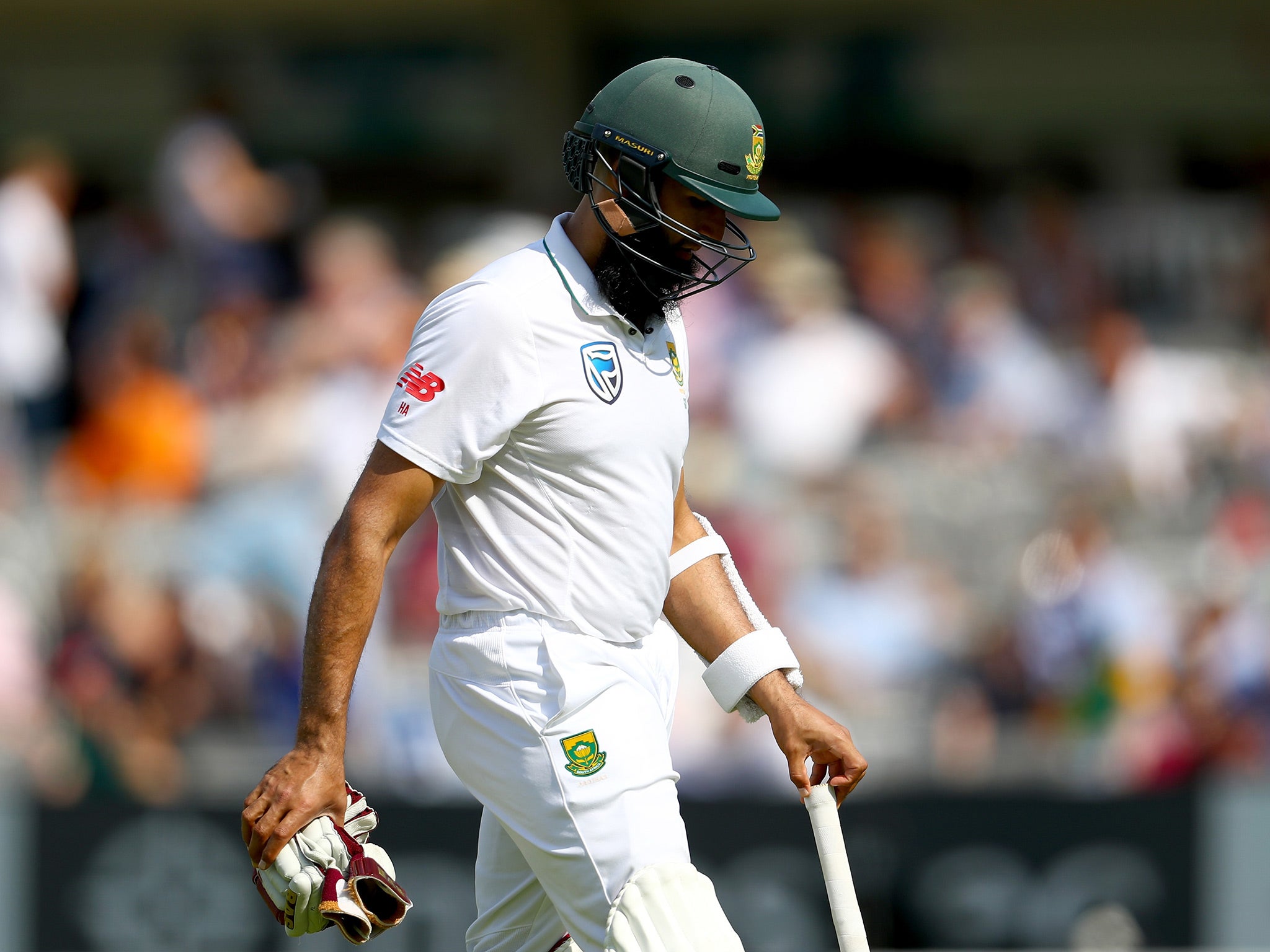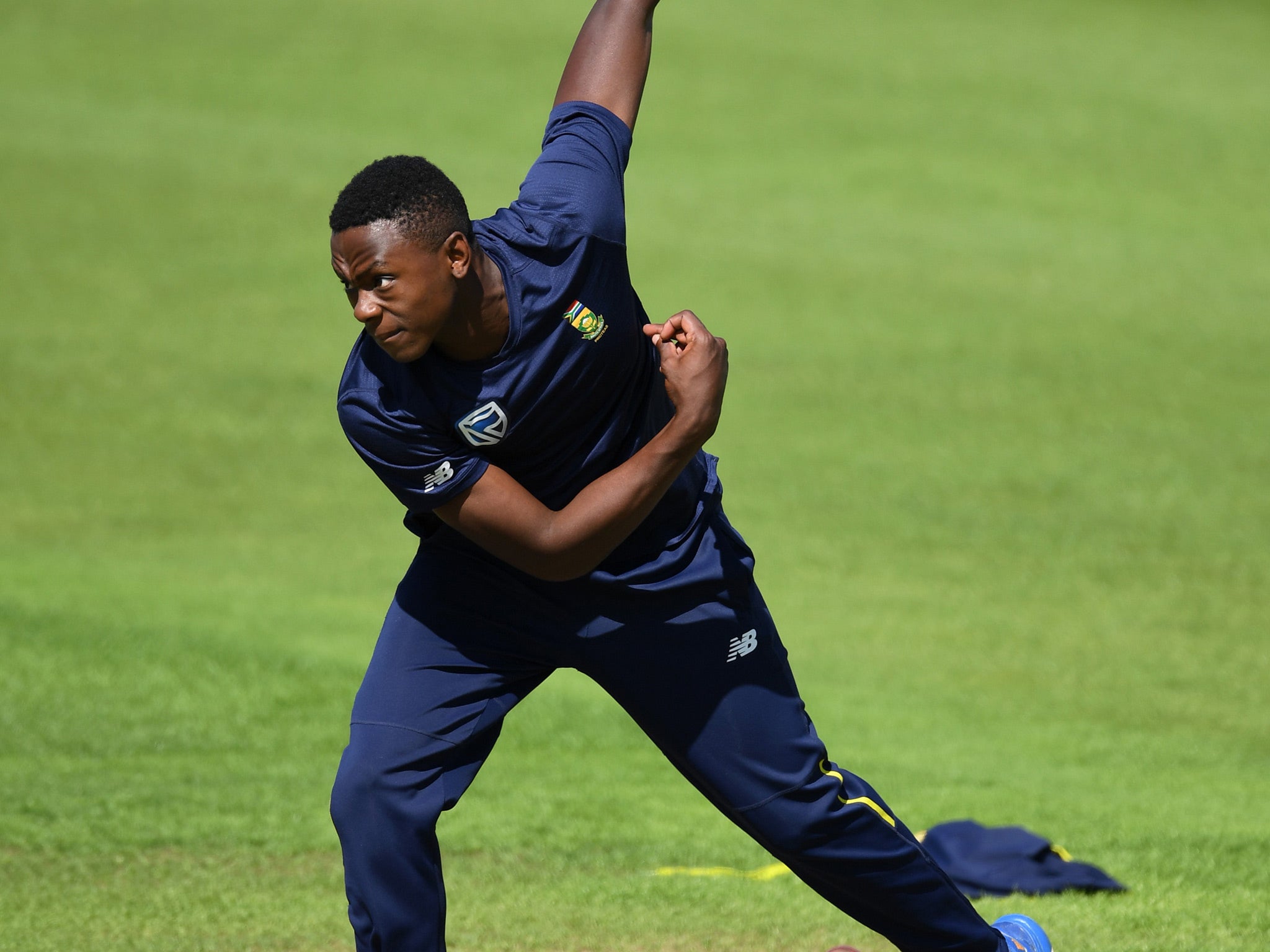The Independent's journalism is supported by our readers. When you purchase through links on our site, we may earn commission.
South Africa's talent crisis threatens to wreck a great cricketing nation
Several separate factors, from a weak currency to Brexit, have combined to undermine the sport

Since readmission 25 years ago, South Africa have been the world’s second best international cricket team; in both Tests and one-day internationals, their win-loss record has only been bettered by Australia. An unyielding South Africa team, in defiance of injuries, scandal, political interference and accusations of a paucity of flair, has been one of world cricket’s few constants.
Seldom have South Africa been as meek as in their ignominious collapse last Sunday afternoon at Lord’s. Worse, it was utterly in keeping with the country’s previous performances in England this summer. Don’t just think of the limp display in the Champions Trophy. Consider, too, a terrible tour for South Africa A, which took in a 257-run evisceration by England Lions and an innings defeat to a Sussex side mostly comprising second eleven cricketers.
International defeats are one thing; the fate that befell the A side was altogether more worrying, evidence of the hollowing out of South African talent, the haemorrhaging of a system that has consistently produced excellent international sides. Ultimately it is a tale of how a potent cocktail of a weak currency, transformation targets and the structure of international cricket today, with a little help from Brexit, combined to undermine South African cricket.
Partly this is a story of forces beyond the board’s control. The rand is 40 per cent weaker against the pound now than at the start of 2011. In a career as short and volatile as cricket, such a rapid depreciation has inevitably led players to pursue opportunities elsewhere. For AB de Villiers, it has doubtless contributed to withdrawing from Test cricket, probably for good, to play more in T20 leagues. Perhaps even worse than the loss of de Villiers from the Test team is how the rand has encouraged fringe players to depart from international cricket. Over the past decade, an average of 48 South African-born players per season have played county cricket, as Tristan Holme recently noted. Before this summer, eight South Africans decided to forego international cricket to play county cricket (seven as Kolpak players; an eighth, Marchant de Lange, qualified because his wife has a British passport).
The problem is not the quality of players being produced by South Africa. It is that too many leave during, or even before, their prime years. “Our biggest challenge is the ongoing retention of our best players for international cricket,” says Tony Irish, chief executive of the South African Cricketers' Association.
Players - including Kyle Abbott and Simon Harmer, the top two wicket-takers in Division One of the County Championship - signing for counties has been accelerated by Brexit. It is widely believed that the Kolpak ruling, allowing anyone from a country with a relevant association agreement with the EU to work in the block without discrimination, will cease to apply in the UK after Brexit is completed. As such, cricketers might only have until 2019 to sign their lucrative Kolpak contracts with English counties - and, by signing now, they can secure long-term deals (although it is not certain that these will entitle them to remain in the country after Brexit).
All eight of the South Africans to leave for county cricket before this summer are classified as white: an emblem of how quota targets have combined with the floundering rand and Brexit to encourage players to emigrate.
From 2016/17, partly in response to the government criticising the pace of transformation, Cricket South Africa introduced a new target - to field an average of a minimum of six players of colour, including two black Africans, over the course of each year. There are good reasons for doing so: black Africans account for 79 per cent of the population, yet only seven of the 94 South African Test cricketers since readmission are black Africans. The national team needs to broaden its talent base. “Growth and sustainability of the game in South Africa depends on our transformation programmes delivering, both commercially and players,” says Haroon Lorgat, the chief executive. “The future lies in unlocking the potential in the majority of our people. It is our stated aim and long-term plan to develop and make full use of all our people in South Africa.” Ultimately, achieving this will require much greater government support for grassroots cricket. As of 2015/16, only 20 per cent of all primary schools in South Africa played cricket, falling to just 4 per cent in Limpopo, the country’s poorest province.
Even if more aggressive transformation targets strengthen South Africa in the long-run, they threaten to damage South African cricket until then. Leading black African players, like the brilliant Kagiso Rabada, could be flogged into the ground for political reasons. Quotas at regional level leave only 30 spots for white players in top-tier domestic sides, encouraging promising young white players - including Keaton Jennings, the former captain of South Africa U-19s - to leave at the start of their careers.

And the perception that transformation targets influence international team selection risks encouraging senior white players to leave. Abbott, who has taken 40 County Championship wickets at 18.70 apiece this season after signing a Kolpak deal with Hampshire, has admitted that “I was very close to walking away after the 2015 World Cup” when he was omitted for Vernon Philander despite being in superb form. Had he still been available, Abbott would have taken the new ball in the Championship Trophy, when Rilee Rossouw, another Kolpak signing for Hampshire, would have featured too. The absence of such players will also weaken South African domestic cricket, increasing the gulf to international level.
All these difficulties have been played out against an unkind backdrop: the way that international cricket is run. South Africa have long been first-class on the pitch, but treated as second-class off it. In 2013/14, India shortened their tour, contravening a previous agreement, seemingly largely because they did not like Lorgat; their decision cost South Africa $11 million, never to be recovered. No less bad is how South Africa have been relatively ignored by the game’s wealthiest nations: England played two full Ashes series at home since the Proteas’ last visit, in 2012, and will play ten Tests at home to India before South Africa return in 2022. Even though the Big Three reforms have been largely undone, South Africa will still receive $278 million less from the ICC between 2016 and 2023 than India, and $11 million less than England. Meanwhile, South Africa have not hosted an ICC global event since 2009, and have none forthcoming; England are amidst a run of hosting three out of four ODI world events, enjoying home advantage and the chance to galvanise the sport that hosting a major international tournament provides. “Not hosting a major ICC event has been a big blow,” Lorgat admits.
Lorgat believes that the launch of a new T20 global league in South Africa this year will make it more financially attractive for players to remain in the country. If it doesn’t succeed, the risk is clear: South Africa’s best cricketers will be able to earn more not playing for their country than representing it.
South Africa’s ability to continue producing huge amounts of talented cricketers is beyond doubt. Altogether less clear is whether these will be more frequently spotted on the domestic T20 circuit, or even representing other countries, rather than playing for South Africa’s own national team.
Join our commenting forum
Join thought-provoking conversations, follow other Independent readers and see their replies
Comments
Bookmark popover
Removed from bookmarks